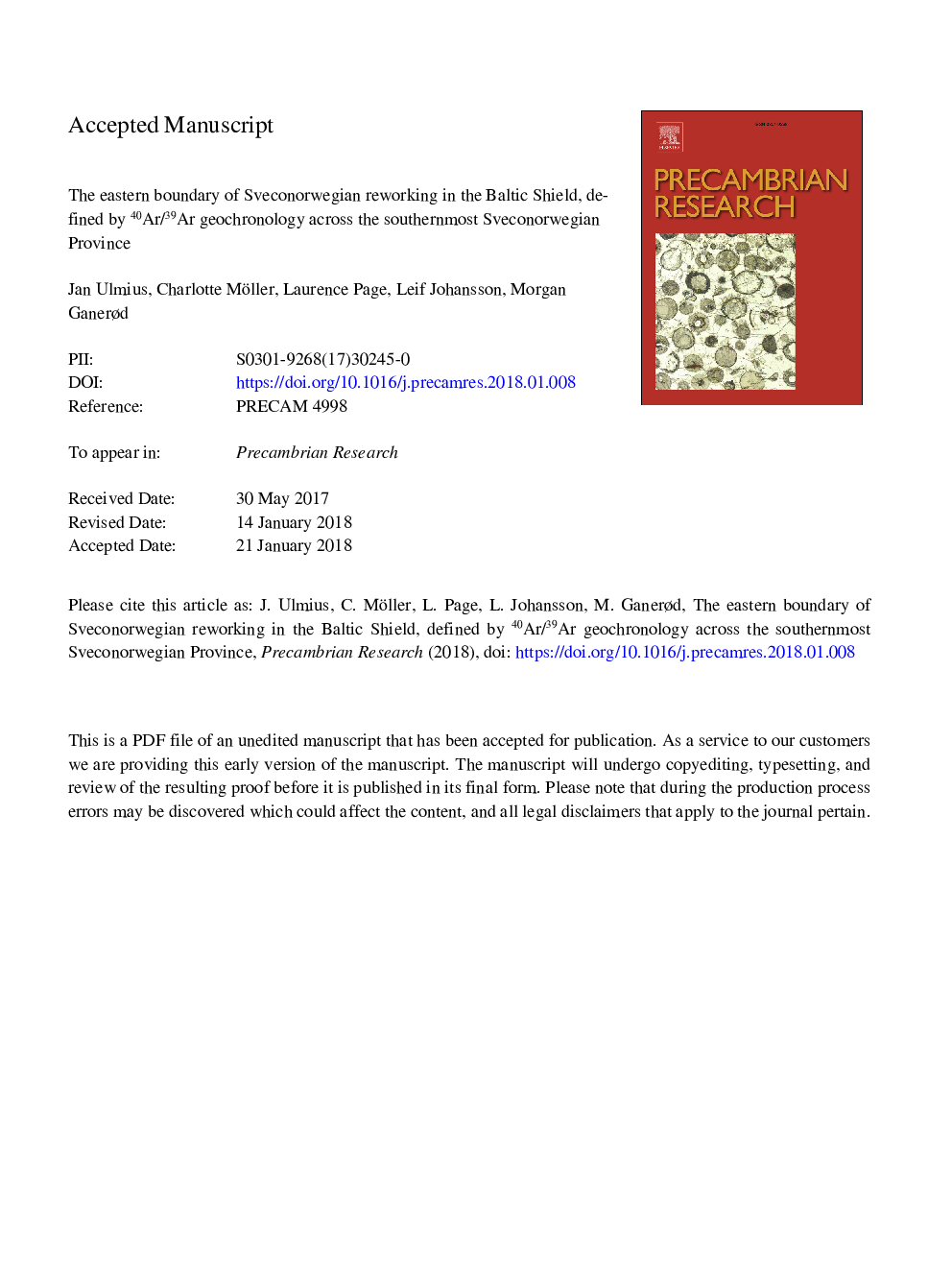| Article ID | Journal | Published Year | Pages | File Type |
|---|---|---|---|---|
| 8912634 | Precambrian Research | 2018 | 53 Pages |
Abstract
New 40Ar/39Ar dates of hornblende, biotite and muscovite from 13 localities along a 130â¯km transect in southern Sweden provide insight into the cooling and exhumation history during Sveconorwegian orogeny, from 970 to 880â¯Ma. The Eastern Segment represents Baltican continental crust underthrust below the western Sveconorwegian terranes at 990-970â¯Ma. The western part of the Eastern Segment consists of amphibolite- to granulite-facies pervasively deformed gneisses, in which hornblende and biotite 40Ar/39Ar dates between 901 and 889â¯Ma record the cooling and exhumation through 530-330â¯Â°C. In the easternmost part of the orogen is a c. 25â¯km wide boundary zone characterized by non-penetrative greenschist- to amphibolite-facies deformation zones. There, muscovite apparent ages range from 882 to 902â¯Ma, biotite from 892 to 906â¯Ma, and hornblende from 1.37 to 1.47â¯Ga, meaning that muscovite and partly biotite record Sveconorwegian overprint, while amphibole was disturbed. Several biotite samples record ages in the interval 0.9-1.4â¯Ga, reflecting excess Ar components. East of the Sveconorwegian Province, in the Blekinge-Bornholm Province, hornblende and mica apparent ages spread between 1.13 and 1.41â¯Ma, implying that neither mineral underwent complete Sveconorwegian resetting. The data pattern reflects that the Eastern Segment experienced slow cooling (â¼3â¯Â°C/Ma) from peak metamorphism of 800-700â¯Â°C at 980-960â¯Ma to 900â¯Ma, when significant cooling though greenschist-facies conditions set in (â¼26â¯Â°C/Ma). This cooling was related to tectonically driven extension, accommodated by greenschist-facies shear zones along the eastern boundary zone.
Related Topics
Physical Sciences and Engineering
Earth and Planetary Sciences
Geochemistry and Petrology
Authors
Jan Ulmius, Charlotte Möller, Laurence Page, Leif Johansson, Morgan Ganerød,
